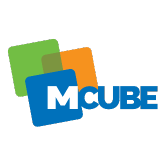LED screens: the innovation that became a revolution
Sight Solutions & Content Creations
LED technology is back as the star of digital signage. Visible both in bright light and at night, today LED screens are used inside or outside all spaces and in all sectors. And it’s not just the format that has changed, from the first DIP LEDs to more recent SMD LEDs, it’s COB LED’s that are sparking innovation.
From the late 1990s to today, research into LED (Light Emitting Diode) technologies has made great strides and continues to develop increasingly efficient solutions. To the point of competing on a par with LCD technologies.
What is an LED and how does it work?
The LED is an optoelectronic device. The operating principle behind it is a miracle of physics: it essentially exploits the ability of some semiconductor materials to produce photons through the phenomenon known as spontaneous emission. The LED consists of a junction system in which two terminals made from semiconductor material (which form the anode and cathode of the system) are mounted so as leave an empty space called the band gap. With a flow of current, the anode and cathode begin fighting to conquer the empty space. It is this dynamic that releases the photons. Depending on the type of semiconductor used, the light emitted will be a different colour.
DIP, SMD and COB: what’s the difference?
The fundamental unit in an LED screen is a set of three diodes: one that generates the colour red, one that generates the colour green and one that generates the colour blue. The number of pixels in a screen depends on the distance between one LED and another. The pixel pitch (also known as pitch or dot pitch), that is, the distance between one LED and the next, is the differential on which screen resolution quality depends: proportionally, the shorter the distance, the better the visual definition.
DIP LEDs (Direct In-line Package)
First developed in the late 1990s, DIP LEDs can be considered first-generation LED technology. The DIP module is assembled using three LED bulbs (red, green and blue) that are through-hole soldered to the circuit board with two connector feet. After assembly, a silicone compound is generally used to ensure that each module can withstand the elements. The guaranteed brightness is very good although the resolution, especially at close range, is not very high.
SMD (Surface Mounted Diode)
SMD LEDs are the second-generation technology. In an SMD module (which is a 1 mm x 1 mm square in standard format), the three colours are encapsulated in a single case that is soldered directly to the circuit board. The advantage of these diodes is that they can be positioned closer together since there are no holes, which results in a higher screen resolution in terms of contrast and colour brightness. There are screens with a pixel pitch of 0.9/1.2/1.5 mm that use standard SMDs. With the more expensive micro SMDs, the pixel pitch falls to 0.6 mm for even better resolution. Considering that a full-HD monitor has a longer pixel pitch while a 98” 4K LCD monitor has a pixel pitch of 0.57 mm, it is clear that SMD LEDs are taking back a prime position in the world of digital signage.
COB (Chip On Board)
COB LEDs are the most revolutionary technology. In this case, the LEDs are not encased but applied directly to a heat sink. Instead of an individual phosphor for each diode, a single larger phosphor coating is used to cover the entire array and spread the light evenly. This allows a further considerable reduction in the pixel pitch, which is practically invisible to the naked eye. Thanks to the high density of the chips in a single array, COB LEDs not only ensure better light flux density, but also offer superior light quality. This technology ensures that viewing quality remains unchanged regardless of the viewing angle. Moreover, the modularity of the COB LEDs allows the creation of unconventional shapes and dimensions that would be impossible to achieve with other technologies. Even the wiring is much simpler because only two contacts are required for each COB array.
Laura Zanotti, Journalist and Technical Writer

